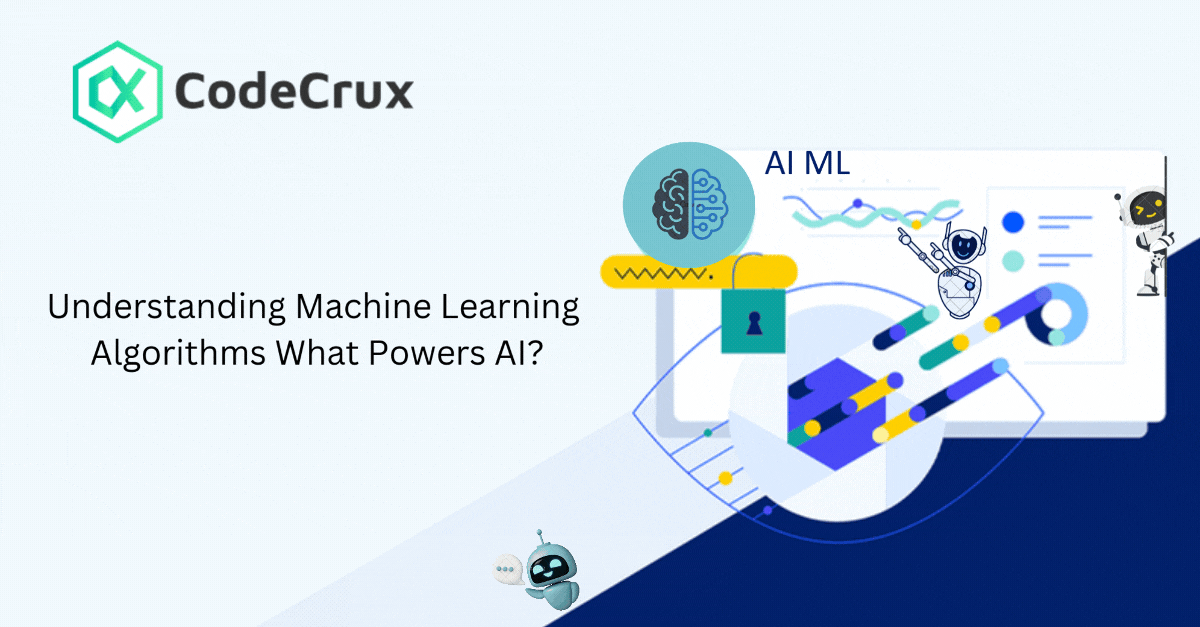Understanding Machine Learning Algorithms What Powers AI?

Welcome file Welcome file
Artificial Intelligence (AI) has revolutionized industries by automating tasks, uncovering insights, and driving innovation. At the heart of AI lies machine learning (ML), a discipline that enables computers to learn and make decisions without being explicitly programmed. Best AI and ML Company In Hyderabad But how do these systems work? This blog will explore the key machine learning algorithms that power AI and how they contribute to solving complex problems.
What is Machine Learning?
Machine Learning is a subset of AI that focuses on developing algorithms capable of learning from and adapting to data. It allows systems to improve their performance on a task over time as they are exposed to more information. Machine learning can be broadly categorized into three types:
-
Supervised Learning
-
Unsupervised Learning
-
Reinforcement Learning
1. Supervised Learning
In supervised learning, algorithms are trained on labeled data. Each data point has a corresponding label, and the algorithm learns to map inputs to the correct outputs.
Common Algorithms:
-
Linear Regression: Used for predicting numerical values, like house prices based on features such as size and location.
-
Logistic Regression: Ideal for binary classification tasks, such as spam detection.
-
Decision Trees: A tree-like model used for both classification and regression tasks.
-
Support Vector Machines (SVMs): Effective for high-dimensional spaces and used in tasks like image classification.
-
Neural Networks: Mimic the structure of the human brain and are used in diverse applications, including image recognition and natural language processing.
2. Unsupervised Learning
Unsupervised learning deals with unlabeled data. The goal is to uncover hidden patterns or structures in the data.
Common Algorithms:
-
K-Means Clustering: Groups data into clusters based on similarity.
-
Hierarchical Clustering: Builds a hierarchy of clusters for exploratory data analysis.
-
Principal Component Analysis (PCA): Reduces the dimensionality of data, helping visualize and process large datasets.
-
Autoencoders: Neural networks used for tasks like anomaly detection and data compression.
3. Reinforcement Learning
Reinforcement learning involves an agent interacting with an environment and learning through trial and error to maximize rewards. This type of learning is widely used in robotics, gaming, and autonomous vehicles.
Key Concepts:
-
Agent: The learner or decision-maker.
-
Environment: The space in which the agent operates.
-
Reward: Feedback received by the agent for its actions.
Common Algorithms:
-
Q-Learning: A value-based method where the agent learns the value of taking specific actions.
-
Deep Q-Networks (DQNs): Use deep learning to handle complex environments.
How Machine Learning Powers AI Applications
Machine learning algorithms are the engines of AI, driving applications across various domains:
-
Healthcare: Predicting diseases, personalizing treatments, and analyzing medical images.
-
Finance: Fraud detection, algorithmic trading, and risk assessment.
-
Retail: Recommendation systems, inventory management, and customer segmentation.
-
Transportation: Autonomous vehicles and route optimization.
-
Marketing: Customer behavior analysis and targeted advertising.
Challenges and Considerations
While machine learning offers immense potential, it also presents challenges:
-
Data Quality: Algorithms are only as good as the data they are trained on.
-
Bias and Fairness: Ensuring that algorithms do not perpetuate existing biases.
-
Scalability: Handling large and complex datasets efficiently.
-
Interpretability: Making model decisions understandable to humans.
Conclusion
Machine learning algorithms form the foundation of AI, enabling systems to learn, adapt, and improve. By understanding these algorithms, we can appreciate the intricate processes that allow AI to transform industries and solve complex problems. As advancements in machine learning continue, the possibilities for innovation are boundless.